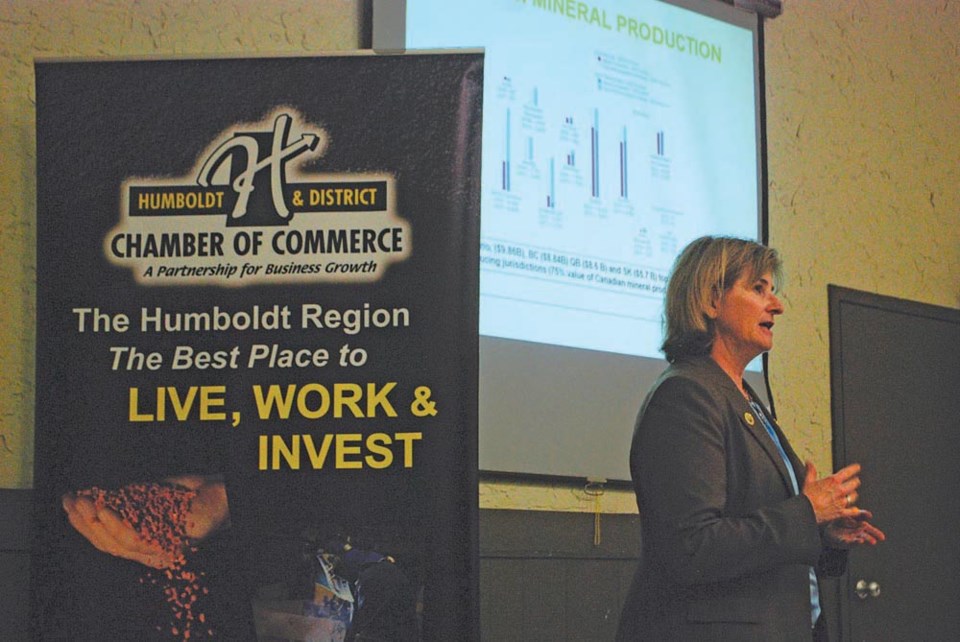Lower commodity prices are causing problems for Saskatchewan mining.
However, mining will continue to be a key piece in the Saskatchewan economy, says president of the Saskatchewan Mining Association Pam Schwann, who was in Humboldt May 29 to speak at a Humboldt and District Chamber of Commerce mining week luncheon.
Saskatchewan continues to be a world leader in potash and uranium productions, with 11 potash mines across the province producing 20.3 million tonnes of potash in 2017 and two mines producing 34 million pounds of uranium in 2017.
Saskatchewan uranium production accounts for 100 per cent of Canadian production and 22 per cent of the global uranium production, reported Schwann.
With the focus of the Saskatchewan economy being on potash and uranium, Schwann says commodity diversity is osmething she wants to see more of as the Saskatchewan mining industry continues moving forward.
We have world-class deposits in both potash and uranium, she says, but Schwann would like to see more exploration for other potential Saskatchewan commodities.
Saskatchewan does have that potential, she says, including one gold mine operating right now through SSR Mining and a Saskatchewan diamond mine at Fort a la Corne.
A more diversified economy will help weather highs and lows of the price cycles. When one commodity is low another will be high, says Schwann.
Right now with the low prices for potash, companies are looking to sell off reserves while looking into costs of production and how to make those more effective with some high cost mines being stalled for a time.
“Because we have a lot of inventory, sometimes in potash and definitely in uranium right now, you see production being curtailed at the high cost operations.”
Going forward, education is going to be a strong proponent to expanding the Saskatchewan mining industry.
With large mining companies working within the Humboldt region, and that is something that Carlton Trail keeps in mind when dealing with their training programs, says Enterprise Division Manager with Carlton Trail College, Deanna Gaetz.
“With our training that we do in the southern and northern parts of the region with our First Nation communities, there are some training specifically done for preparing people to work in the mining industry.”
Saskatchewan mining has a strong performance record, says Schwann, with no major environmental disasters ever reported and strong environmental regulations within the mining industry.
That is a big misconception about the industry as whole, she says, with the mining industry Canada wide having strong performance record both within environmental regulations and safety.




